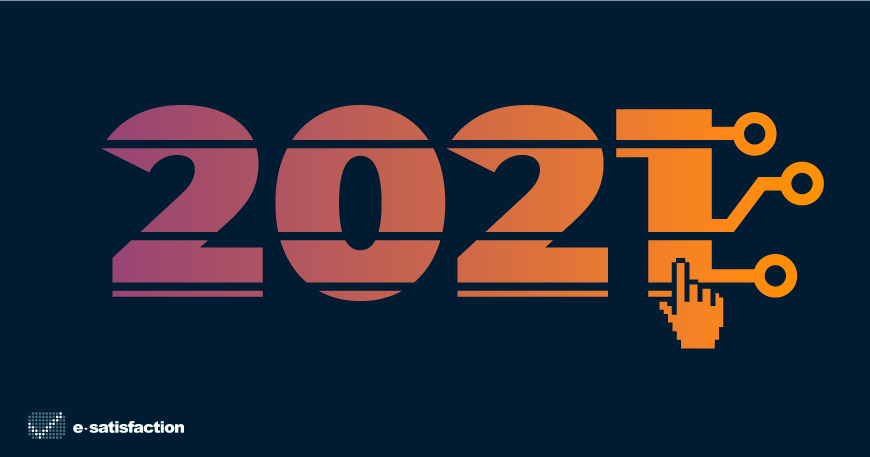New Year, New Trends: What 2021 has in store for Customer Behavior and e-commerce?

To say that 2020 was a big year for e-commerce would simply be an understatement. With all the changes that were abruptly introduced in our daily lives due to the pandemic, online transactions became the norm and it’s fairly safe to assume that the e-commerce world will never return to its pre-pandemic state.
Customers who preferred physical to online stores for a number of reasons -before lockdowns dictated the closing of the former- turned to online shopping. Retailers had not been prepared for such a rise in online orders and found themselves implementing a number of changes (e.g. modifications in the supply chain and order processes, call center staffing etc) that would normally take months or years in the course of a few months.
To better illustrate these changes and be prepared for what we can expect in 2021, let’s take a closer look at how consumer behavior and e-commerce are now shaped.
How will consumers think and feel in the next six months?
An event of such proportions, like the global spread of COVID-19, has countless ramifications, but a significant outcome is the reshaping of our priorities and what we consider important. Living with COVID-19 for almost a year, consumers now list the following three main priorities and concerns:
- Personal health, as well as the health of their loved ones, friends and acquaintances
- Financial security
- Safety as a whole
When it comes to safety, our homes are now -more than ever- the point of reference. Working from home and small indoor gathering have substituted office life and other forms of socialization.
The numbers of a recent study by Accenture speak for themselves:
Work and Socialization
- 85% of consumers favor working from home in the next six months.
- 73% of consumers favor socializing at home in the next six months.
- 59% of consumers favor connecting virtually with friends in the next six months.
Consumer Trends
Consumers seem to be taking a turn towards a more mindful, locally-oriented shopping approach:
- 72% of consumers are limiting food waste with 90% likely to continue post-crisis.
- 61% of consumers are making more environmentally friendly, sustainable or ethical purchases with 89% likely to continue post-crisis.
Online buying habits are also expected to be reshaped, with the numbers of infrequent or frequent online buyers expected to rise over 150%. This rise in e-commerce comes with new brand choice criteria which are dictated by the needs and claims of Generation Z. These new criteria include fair employment and brands’ ethical practices and positions on current matters.
What should retailers expect and prepare for in the coming months?
Certainly, not a return to normal, if by “normal” one refers to the pre-pandemic state of affairs. Retailers need to adjust to the new normal, the new consumer trends and demands as they have been shaped and accelerated during 2020.
In-store experiences are now characterized by contactless payments and transactions, maintaining proper distances, setting a maximum number of customers allowed inside and making service as quick as possible. Is it possible that those conditions amount to a better customer experience?
Things are different when it comes to e-commerce, but simplifying the buyer’s journey and making the process easier still remains an imperative. Online stores with poor UX test the customers’ patience and will thus be avoided. This is why mobile responsiveness has now been transfigured from a trend to a must practice.
It is also evident that “Buy online, pick up in-store” (BOPIS) practices will not go away in the foreseeable future, but in order to lure customers back to physical stores, retailers should offer the promise of a seamless in-store experience. Face-to-face service will need to be re-built based on new standards and acquire a set of distinct competitive advantages against e-commerce.
That doesn’t mean that the e-commerce world will keep spinning without interruptions. Online retailers and brands should turn towards innovation and invest in UX and CX best practices if they wish to make a difference in this landscape and maintain their loyal customers.
Those innovative technologies and best practices are nothing new to e-commerce. On the contrary, they are almost inherent to it and include:
- Artificial intelligence
- Inventory management
- Predictive analytics
- Personalization and automations
- Co-creation functions
Where can retailers go from here?
Since its inception, the digital world has never been faced with more challenges and opportunities. If one thing is clear so far, it is that e-commerce now has the means to offer a holistic customer experience, by stimulating consumers on different stages of their journey, engaging them in a personalized fashion and connecting with them in more meaningful ways.
Furthermore, consumers have never felt their voice as heard as now. Customer feedback, in all its various forms, has turned from something brands feared to a valuable asset, one that comes bearing benefits that should no longer be ignored.
Face-to-face communications have been straining under the weight of COVID-19, but their online counterparts have strengthened, along with consumers’ demands and habits. And how can retailers and brands learn what this new type of customer wants? The answer is simple and hasn’t changed: by asking the right questions and listening to the answers!
You got 15 minutes? Let our team show you
how we can help your business grow!